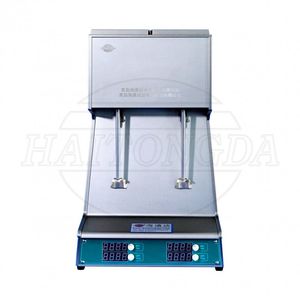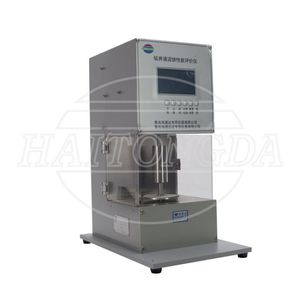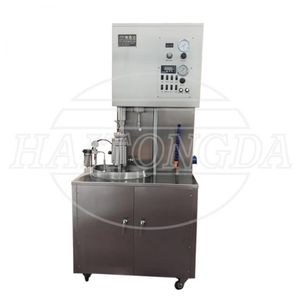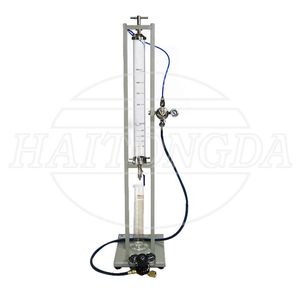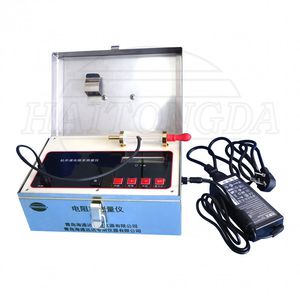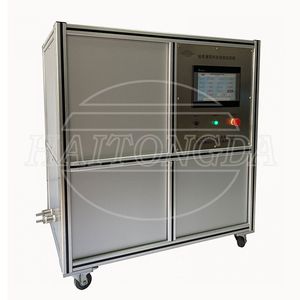
- Metrology - Laboratory
- Metrology and Test Equipment
- Rotary viscometer
- Qingdao Haitongda Special Instrument Co., Ltd.
Rotational viscometer HTD13145laboratorybenchtop
Add to favorites
Compare this product
Characteristics
- Type
- rotational
- Applications
- laboratory
- Configuration
- benchtop
Description
Model HTD13145 rotational viscometers are direct-reading instruments which are available in six-speed and twelve-speed designs for use on either 50Hz or 60Hz electrical power. The power source is 100~240V. All models are fitted with a standard transformer.
Model HTD13145 rotational viscometers are coaxial cylinder rotational viscometer. In this viscometer, the test fluid is contained in the annular space (shear gap) between an outer cylinder and the bob (inner cylinder).
Viscosity measurements are made when the outer cylinder, rotating at a known velocity, causes a viscous drag exerted by the fluid. This drag creates a torque on the bob, which is transmitted to a precision spring where its deflection is measured. Compare measurements with test conditions and instrument constants. Model HTD13145 rotational viscometers are used in research and production. These viscometers are used for evaluating the rheological properties of fluids.
Viscosity measured by a coaxial cylinder rotational viscometer. Model HTD13145, is a measure of the shear stress caused by a given shear rate. This relationship is a linear function for Newtonian fluids (i.e., a plot of shear stress vs. shear stress vs. shear rate is a straight line).
The instrument is designed so that the viscosity in centipoise (or millipascal second) of a Newtonian fluid is indicated on the dial with the standard rotor, bob, and torsion spring operating at 300 rpm. Viscosities at other test speeds may be measured by using multipliers of the dial reading. A simple calculation that closely approximates the viscosity of a pseudo-plastic fluid, such as a drilling fluid.
Catalogs
No catalogs are available for this product.
See all of Qingdao Haitongda Special Instrument Co., Ltd.‘s catalogsOther Qingdao Haitongda Special Instrument Co., Ltd. products
Drilling Fluids Testing
Related Searches
- Test machine
- Automatic test machine
- Portable testing system
- Digital testing system
- Automatic test equipment
- Industrial testing system
- Precision test machine
- Automatic testing system
- Cabling tester
- Industrial test equipment
- Viscosity measurement device
- Resistance testing system
- Static testing machine
- Tester with LCD screen
- Benchtop testing system
- Compact testing system
- Digital test kit
- Battery testing system
- Cement test machine
- Hydrometer
*Prices are pre-tax. They exclude delivery charges and customs duties and do not include additional charges for installation or activation options. Prices are indicative only and may vary by country, with changes to the cost of raw materials and exchange rates.




